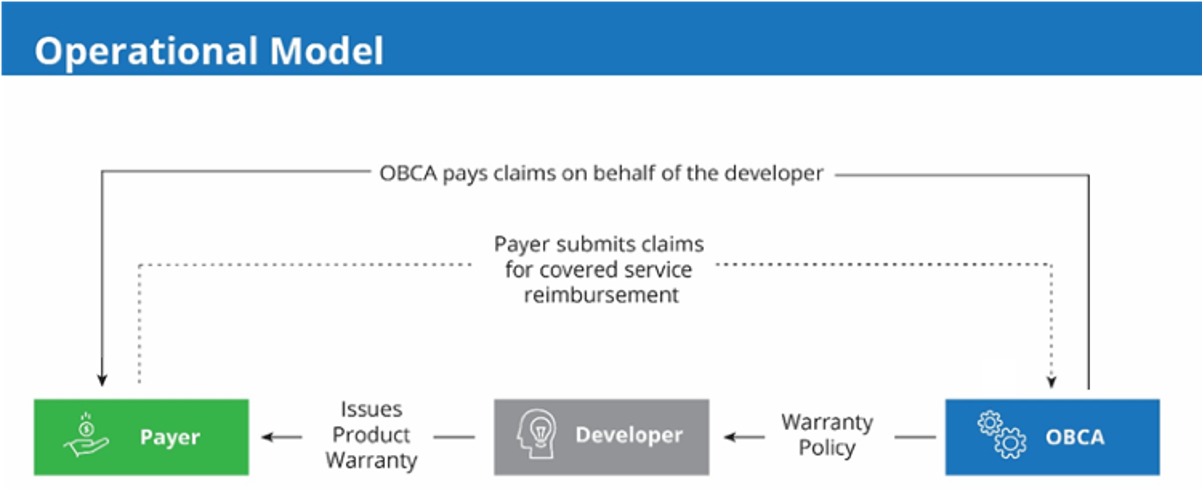Warranty
A warranty model, as a Precision Financing Solution, helps payers handle potential performance risk associated with a therapy over one or multiple years. A warranty reimburses payers for other drug and medical costs should the performance risk associated with a therapy be actualized. It allows a developer to stand behind the promise of a durable therapy.
Conceptually, a developer would make a product warranty available on an individual patient basis to cover expenses and other costs that would have been avoided had the product performed as intended. Operationally, the warranty would be administered by a developer, an external management resource, or a new administrative entity referred to as an Outcomes-Based Contract Administrator (OBCA). The policy is issued to payers and/ or patients and reimburses the policyholder for future expenses incurred in the event the covered therapy does not meet the developer’s efficacy promise, as the below figure illustrates. Warranty payments represent covered damages as opposed to a rebate associated with the price of the therapy.
Each warranty policy focuses on therapy-specific developer promises, coverage terms, and triggers that can collectively result in claims payments. In some cases, it may be necessary to address additional outcomes-based scenarios that occur outside of the standard coverage. This can be handled through riders or addendums to cover specific scenarios, such as known severe outcomes, or mortality through life insurance.

Figure: Conceptual warranty model
For example, in the case of hemophilia A, the developer may insure payers against the consequences if the durable effect diminished over time, resulting in the need for supplemental Factor VIII. In essence, the warranty would reimburse the payer for the costs of the supplemental Factor VIII if needed by a gene therapy-treated patient. The warranty would not provide any refund on the price of the gene therapy product itself.
A warranty may address the volatility challenges of current Medicaid Best Price (MBP) calculations. Under regulations for the Medicaid Drug Rebate Program, Medicaid should be provided with net prices that are comparable to or lower than the best prices received by most other payers (the “best" price). MBP compliance may impact the rebate amount associated with agreed-upon standards. If only the cost of the warranty premiums is included in the price of the medicine—an interpretation that appears plausible based on similar historical examples but remains to be tested—the volatility of the net price is eliminated.
The warranty model also shifts the administrative burden of tracking patients to the OBCA. The model relies on clear, easily identifiable, and measurable clinical markers to reduce claims adjudication subjectivity and outcome results reporting. However, in the presence of clear biomarkers, the warranty provides flexibility for developers to use other validated efficacy monitoring mechanisms as part of the pre-defined criteria. Additionally, the warranty model does not address the issue of coverage portability present with all existing financing and efficacy solutions.
Pfizer currently offers a warranty for their product Xalkori with details available here. Additional details on the proposed warranty model may be found in this FoCUS white paper.